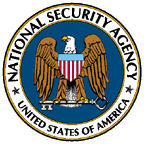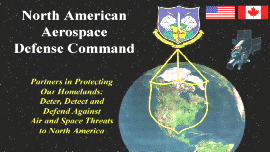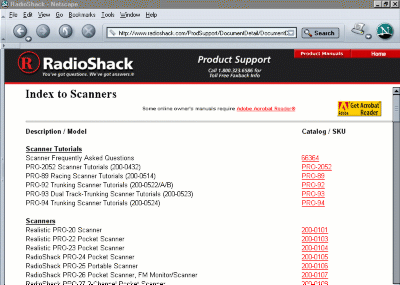| This article first appeared in the January 2003 issue of Monitoring Times. |
The United States military relies on trunked radio to provide efficient, reliable communication for the day-to-day administrative tasks of running bases and camps. Monitoring these systems can be a challenge, since frequencies for military trunked radios are often more difficult to determine than for public safety agencies. The Federal Communications Commission (FCC) databases that are so useful for commercial and local government systems do not contain Federal government frequency assignments, so a good deal more investigation is necessary.
Howdy Dan,I'm a regular subscriber to Monitoring Times and your "Tracking the Trunks" column is fantastic. I used to monitor Fort Bragg, North Carolina's trunked federal system (406-420mhz) in the conventional mode before they went digital. Can you advise if the new Uniden Bc785D or BC250D with digital card installed will enable me to monitor federal trunked systems operating in the digital mode?
Thanks, Broadus
My records show that Fort Bragg, North Carolina, shares a Motorola Type II system with Pope Air Force Base. It's believed to have 28 channels, and unless transmissions are encrypted you should be able to use a BC250D or BC785D (with a BCi25 card) to listen to the audio and track trunked conversations. Please write again and let us know what you find!
Many military systems operate in the 400 MHz range, with a standard base of 406.000 MHz and an offset of 25 kHz. Some other military installations, along with talkgroup information (in decimal) when available:
Aberdeen Proving Ground (APG), Maryland
APG, among other things, performs environmental and safety testing on a variety of tactical wheeled and tracked vehicles. Live fire from Abrams tanks and Bradley fighting vehicles is common. APG operates a Motorola Type II system that carries both analog and digital voice traffic. Frequencies for Aberdeen and the adjacent Edgewood Area are 406.225, 406.350, 406.700, 407.250, 407.275, 407.475, 408.550, 409.025, 409.500 and 410.150 MHz.
688 Range Clearances
1904 APG Police
Air Force Academy, near Colorado Springs, Colorado
The Academy operates a Motorola digital system on several 400 MHz frequencies including 407.150, 407.350, 407.950, 409.025, 409.225, 409.500, 409.750 and 409.775 MHz.
Andrews Air Force Base, Suitland, Maryland
Andrews is home base for Air Force One, the President's official aircraft. Andrews has also been the center of activity for combat air patrols flown over Washington, D.C. after the terrorist attacks of September 2001. Frequencies in use: 406.350, 406.950, 407.150, 407.425, 408.025, 408.200, 408.750, 409.350 and 409.725 MHz.
176 Presidential Pilots Office
208 Command Post Operations
432 Emergency
1136 1st Helicopter Squadron Operations
1776 Field Operations (1)
1808 Field Operations (2)
Edwards Air Force Base, California
Edwards has served as a flight test range for decades and is also the West Coast landing area for the space shuttle. Apparently there are two Motorola systems here, one with frequencies of 408.200, 409.225, 409.550, 409.775, 409.825, 410.150, 410.525 and 410.750 MHz, and the other using 406.350, 406.750, 408.175, 409.125, 409.500, 409.650, 409.750 and 410.400 MHz.
Fort Huachuca, Sierra Vista, Arizona
The Army performs a good deal of classified communications-related work here in southern Arizona. The Motorola Type II system on base uses 406.950, 407.150, 407.550, 407.950, 408.150, 408.350, 408.750 and 409.150 MHz.
Luke Air Force Base, Glendale, Arizona
Luke AFB is a major training center for fighter pilots and is home to more than 200 military aircraft. The Motorola trunked system has been heard on 407.150, 407.950, 408.150, 408.200, 408.750, 409.150, 409.375, 409.550, 409.775 and 409.950 MHz.
Camp Lejeune, North Carolina
This Marine Corps base covers a large geographic area and provides training and mission preparation. Frequencies used on the Motorola system are 406.350, 406.950, 407.150, 408.550, 408.750, 409.550, 409.750 MHz. Use a base frequency of 406.350 MHz and an offset of 50 kHz.
80 Military Police Dispatch
624 Camp Johnson Operations
656 Marine Combat Training
1744 Fire Dispatch
9008 New River Air Station Base Operations
 Fort Meade, Maryland
Fort Meade, Maryland
This Army base is probably most famous for being home to the National Security Agency (NSA). The Motorola Type II system uses 406.325, 407.400, 407.575 and 409.450 MHz.
48 Fire Dispatch
80 Fire Operations (1)
112 Fire Operations (2)
368 Military Police Dispatch
400 Tactical
464 Gate Security
880 Command and Control
Patuxent River Naval Air Warfare Center, Patuxent River, Maryland
Informally known as "Test Pilot School," Pax River trains Navy test pilots and performs a variety of aircraft flight testing. Possible frequencies include 406.350, 410.150, 411.325, 412.050, 412.750, 416.950, 417.925 and 419.675 MHz.
Camp Pendleton, California
This West Coast Marine Corps training facility uses a Motorola Type II system on 406.550, 406.950, 407.175, 407.300, 407.325, 408.200, 408.750, 409.275, 409.750, 409.950 and 410.150 MHz.
592 Naval Hospital Security
1424 Range Control (Range 2)
5584 Range Control (Range 1)
 Peterson Air Force Base, near Cheyenne Mountain, Colorado
Peterson Air Force Base, near Cheyenne Mountain, Colorado
The 21st Space Wing provides missile warning through NORAD, the North American Aerospace Defense, and space control through the U.S. Space Command. The Global Positioning System (GPS) is also controlled from here. Frequencies on the Motorola Type II are 406.350, 406.550, 407.150, 407.350, 407.950, 408.750, 408.950, 409.550, 409.750, 409.950 MHz.
16 Peterson Ground
272 Fire/Rescue TAC
368 Peterson Crash
496 Base Operations
528 U.S. Air Force Museum
1072 Flight Line Operations
Vandenberg Air Force Base, California
Vandenberg serves as launch facility for many military and commercial satellites. The Motorola Type II frequencies are 407.150, 407.550, 408.750, 408.950 409.150, 409.350, 409.550, 409.750, 409.950 and 410.150 MHz.
Wright-Patterson Air Force Base, near Dayton, Ohio
The extensive aircraft museum at "Wright-Pat" is familiar to many Dayton HamVention attendees, but there's more going on there than tourism. The frequencies on the Motorola Type II system are 406.350, 406.550, 407.150, 407.350, 407.950, 408.750, 408.950, 409.550, 409.750 and 409.950 MHz. Use a base frequency of 406.350 MHz and an offset of 50 kHz.
368 Crash Crews
8016 Security (1)
8048 Security (2)
8080 Security (3)
11312 Flight Operations
Finding Scanner Manuals
Dan,I tried to bring up www.support.radioshack.com/support_electronics/2849.htm to get a manual for my Pro39 scanner, but it wouldn't come up. Is this the right one or do you know another. Thanks for your articles...I enjoy reading them.
Bob
Manuals for many scanners, old and new, are available on the Internet. Most of these electronic manuals are in Portable Document Format (PDF) and require the use of free reader software from Adobe Systems, Inc., called Acrobat Reader. If you do not have this program installed already, go to http://www.adobe.com and download it.
Retrieving manuals is helpful not only for current owners, but for anyone contemplating purchasing a new or used scanner. Reading the manual before spending money is a more cost-effective way of finding out whether the unit you're looking at has the features, performance, coverage and ease-of-use that you're looking for.
http://www.radioshack.com/ProdSupport/ DocumentDetail/DocumentDetailIndex.asp?P=support_electronics&D=2849&T=htm Manuals and other support information for scanners sold by Radio Shack
are available for downloading at
Manuals and other support information for scanners sold by Radio Shack
are available for downloading at
Uniden has a slick web site at http://www.uniden.com, and their scanner product support page is located at http://www.uniden.com/productsupport.cfm?cat=Scanners
The manuals for the new BC250D and BC785D digital scanners are already available there.
AOR has a website with a number of manuals for discontinued scanners dating back to the AR880 and AR900. There's even a manual for their ADU5000 external spectrum display unit. The manuals can be found at http://www.aorusa.com/support.html
Icom maintains a technical document section on their web site at http://www.icomamerica.com/support/documents/index.html where you can find manuals for their current production receivers (down near the bottom of the page).
If you don't have any luck finding an electronic manual to download, you'll probably have to go back to the old-fashioned paper kind. Sometimes calling or writing to the manufacturer can yield a free or inexpensive copy mailed to you. There are also a number of individuals who sell original and photocopied manuals for scanners, as well as for test equipment, ham radio gear and other electronics. The Hobby Radio Stop in Ohio has many, many manuals for older radios. You can find them on the web at http://www.bearcat1.com/owner.htm. Manual Man (Peter Markavage), http://www.manualman.com, and Gary Gompf, W7FG at http://www.w7fg.com/, each have hundreds of manuals for a wide variety of electronic equipment, including scanners.
So Bob, the support page for the PRO-39 can be found directly by going to http://www.radioshack.com/ProdSupport/ DocumentDetail/DocumentDetailIndex.asp?P=support_electronics&D=2849&T=htm